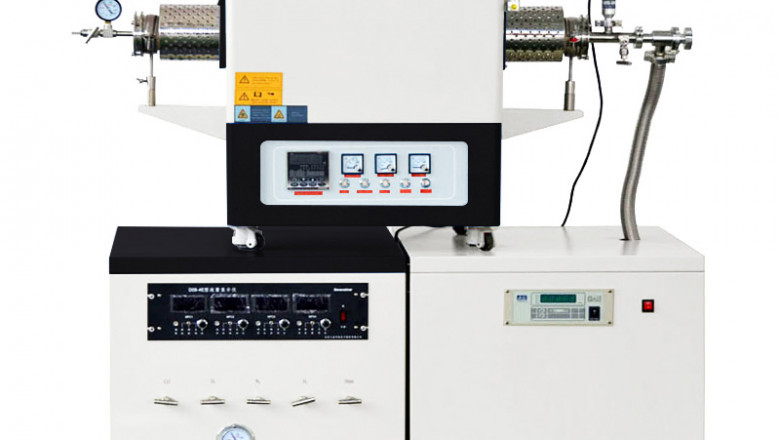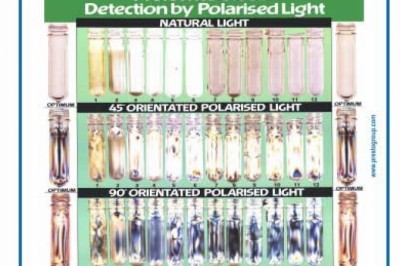views

Most laboratories and industrial facilities utilize a heat treatment furnace in their day-to-day operations, making it an essential piece of equipment in their workplace. Heat treatment furnaces are efficient and versatile tools used for high-temperature heating and convection. These furnaces come in varying styles, with specific configurations that are ideal for specific applications.
If you work in a lab and are looking into getting a lab furnace, you need to know which type to choose and which one can suit your needs. Read on to learn about the various types of heat treatment furnaces and their differences.
Types of Heat Treatment Furnaces
1. Batch Furnace
Batch furnaces provide a single chamber for heating and cooling, which is the batch. The batch is stationary, which means changes within the furnace atmosphere occur in near-equilibrium conditions. One common use of batch furnaces is heating a group of large, heavy components, starting from room temperature up to a specified set point, and then lowered back down in a controlled manner.
After the first batch, another group of components is charged, then heat treated. Each set can differ from the other, which means you can charge batches that vary in steel grade, weight, size, and type of heat treatment required (i.e., heating temperature, soaking time, etc.).
When you have several batch furnaces, you can specialize your work. For example, you can use one set of furnaces for annealing and the other for normalizing. Without batch furnaces, productivity can be low, and your electric power or fuel consumption will increase.
The most common type of batch furnace is the integral-quench furnaces. It has an obstruction-free work chamber, strategically located heat sources, and large capacity re-circulation fans. Other types of batch furnaces include:
- Bell furnaces
- Box furnaces
- Car-bottom furnaces
- Elevating hearth furnaces
- Fluidized-bed furnaces
- Gantry furnaces
- Mechanized box furnaces
- Pit furnaces
- Salt-pot furnaces
- Split or Wrap-around furnaces
- Tip-up furnaces
2. Continuous Furnace
In a continuous furnace, the movement of the workload and the environment surrounding it change dramatically. The to-be heat-treated components are continuously charged at one end of the furnace. Then, when they reach the other end, they are discharged because the heat treatment is over.
Generally, a continuous furnace is fixed at one set point, for a specific process. This means that it can only heat treat components of the same size, composition, and treatment cycle, without having to be shut down and re-configured. (i.e., only one process, such as carburizing, annealing, normalizing, or hardening, could be done in one continuous furnace). This is why continuous furnaces are best for high-volume components or mass production.
The initial cost of a continuous furnace may be expensive, but because of the reduced labor costs and high efficiency of flow charge, the running costs are low, especially when furnaces run continuously for 24 hours a day. Here are the different types of continuous furnaces:
- Cast link-belt furnaces
- Humpback furnaces
- Mesh-belt furnaces
- Monorail furnaces
- Pusher furnaces
- Roller-hearth furnaces
- Rotary-drum (rotary-retort) furnaces
- Rotary-hearth furnaces
- Shaker-hearth furnaces
- Vacuum furnaces
- Walking-beam furnaces
3. Atmosphere Furnace
In an atmosphere furnace, the workload is surrounded by a “protective” atmosphere during the heating and cooling process. One of the most common furnace atmospheres is air. An air atmosphere is often used in low-temperature tempering operations. In this setup, cosmetic appeal typically isn’t important since the air atmosphere exposes the material to issues like oxidation that affect its surface or skin.
The purpose of the furnace atmosphere depends on your desired result. Mainly, there are two common purposes:
- To protect the processed material from surface reactions and make it chemically protective
- To allow the surface of the material to change or be chemically reactive
As such, you need to select your furnace atmosphere according to your desired result. There are different atmospheres used in furnaces, and you must understand how they affect the process, their advantages, and their disadvantages, so that you can learn how to control them safely. Some examples of atmospheres in the heat-treatment process include:
- Air
- Argon
- Carbon dioxide
- Carbon monoxide
- Custom blends
- Generated atmospheres
- Helium
- Hydrocarbons
- Hydrogen
- Nitrogen
- Oxygen
- Products of combustion
- Steam
- Sulfur dioxide
- Synthetic atmospheres
4. Vacuum Furnace
Using a vacuum furnace, you heat materials (mostly metals) in extremely high temperatures with low pollution and high consistency. You can also load materials either vertically or horizontally.
A vacuum furnace can have a batch or continuous design. The design depends on the cooling medium, load size, temperature, and pressure. Compared to other furnaces, a vacuum furnace has more designs that cater to special conditions.
Vacuum furnace vessels can either have a hot or cold wall design. With a hot wall, the furnace doesn’t have a water-cooled shell or a retort where you can place the metallic or ceramic workload. The heating system is outside the retort and has an induction coil or other resistive heating elements.
Meanwhile, with a cold wall, the furnace is cooled by water or other cooling mediums. It’s also kept near ambient temperature when operations reach high temperatures. Compared to a hot wall furnace, a cold wall furnace has higher operating temperature ranges, faster heating and cooling performance, and greater temperature uniformity.
Choose the Perfect Heat Treatment Furnace
In certain laboratories, a heating chamber or heat treatment furnace is essential to get the job done. Therefore, you must choose the right type of lab furnace for your workplace or your project. To find the right heat treatment furnace, check out AI Furnaces’ wide selection of lab furnaces.












